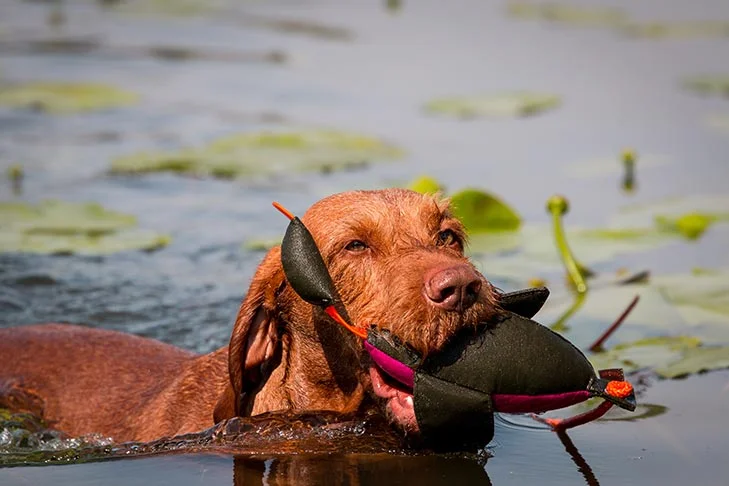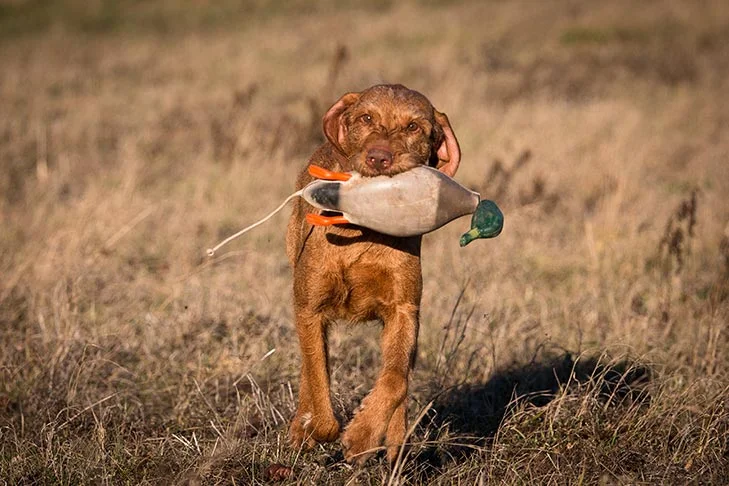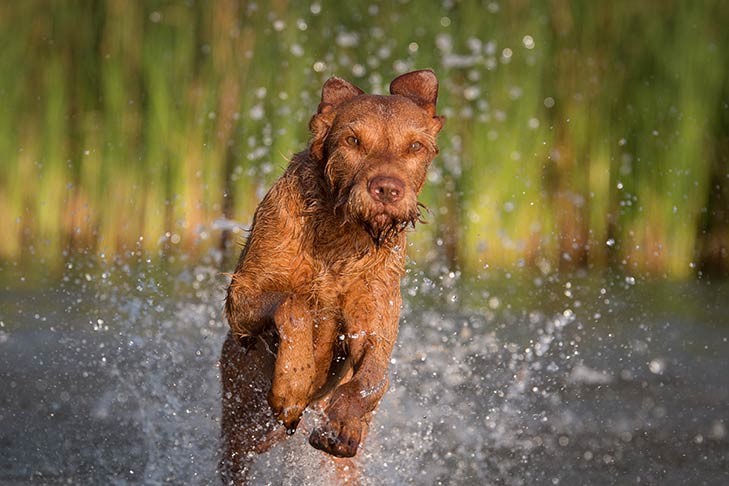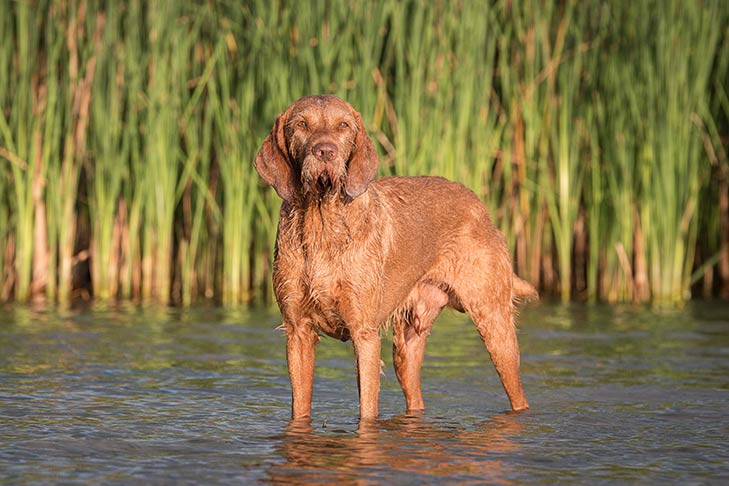The Wirehaired Vizsla is a boisterous hunter on land or in water and is distinguished from his near relative, the Vizsla, by his dense, wiry coat. These cheerful Hungarians are calm and friendly around the house and like sports like swimming and running. Although they are closely related to vizslas, WVs are a distinct breed. The coat type is the main identifying characteristic. In contrast to the sleek Vizsla, the WV has a dense, wiry coat, and its shaggy beard and brows highlight its bright, animated countenance. The WV and smooth-coated Vizsla are both considered medium-sized dog breeds, but the ideal WV will be slightly taller and heavier than the smooth-coated kind. Both breeds have a nose and eyes that subtly complement their coats and a striking red coloration (golden rust).
Wirehaired Vizsla
Average sizes and life
expectancy of the breed.
Height
23-25 inches (male)
21.5-23 inches (female)
Weight
55-65 pounds (male)
45-55 pounds (female)
Life Expectancy
12-14 years
Breed Traits & Characteristics
About the Breed
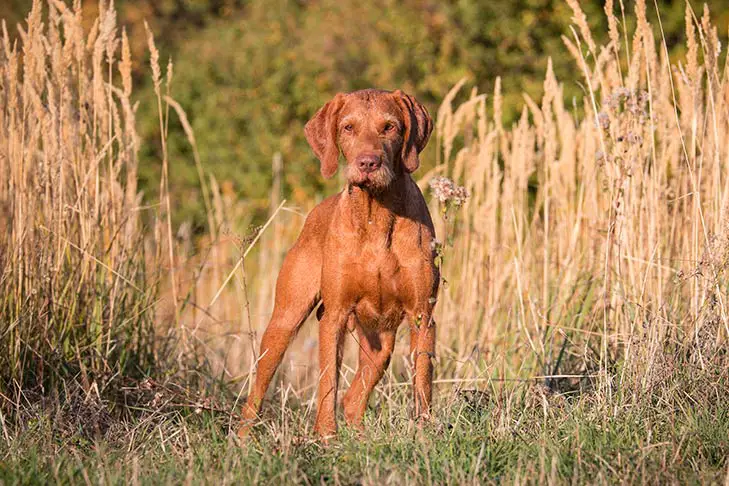
Owning a dog is not just a privilege; it’s a responsibility. They depend on us for, at minimum, food and shelter, and deserve much more. When you take a dog into your life, you need to understand the commitment that dog ownership entails.
 Health
Health
Recommended Health Tests From the National Breed Club:
- Hip Evaluation
- Ophthalmologist Evaluation
 Grooming
Grooming
 Exercise
Exercise
 Training
Training
 Nutrition
Nutrition
History
We know much more about how Wirehaired Vizslas were formed in the 1930s since the history of dogs developed in the 20th century has been much better chronicled than that of older breeds. The short explanation is that Hungarian falconers and hunters desired a dog with the same drive and adaptability as their beloved Vizslas, but with a stronger frame and a denser coat, the better to work on difficult terrain and in the chilly weather of northern Hungary. Vizsla and German Wirehaired Pointer hybrids were wisely used to achieve this.

